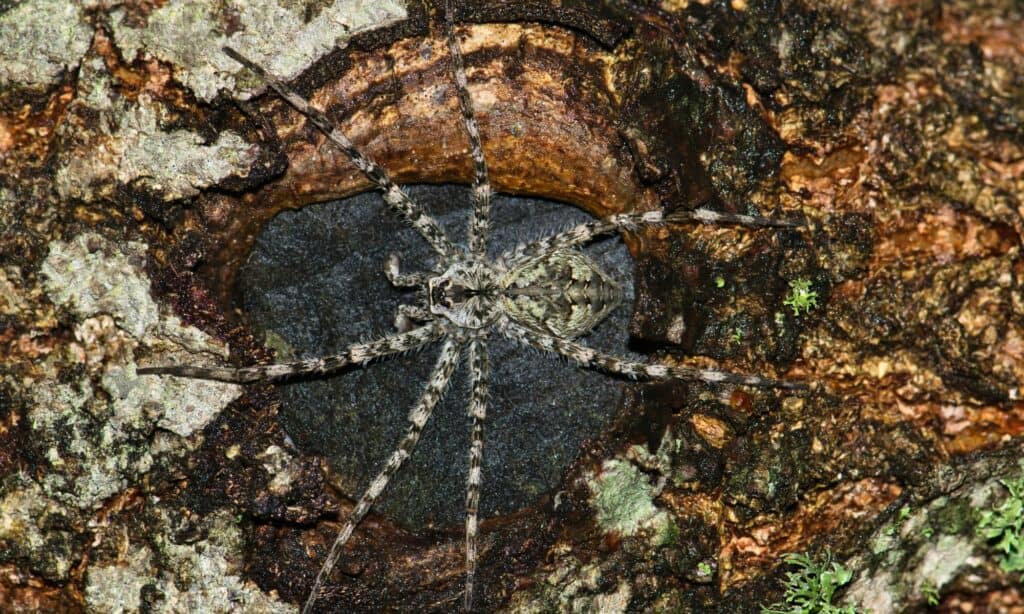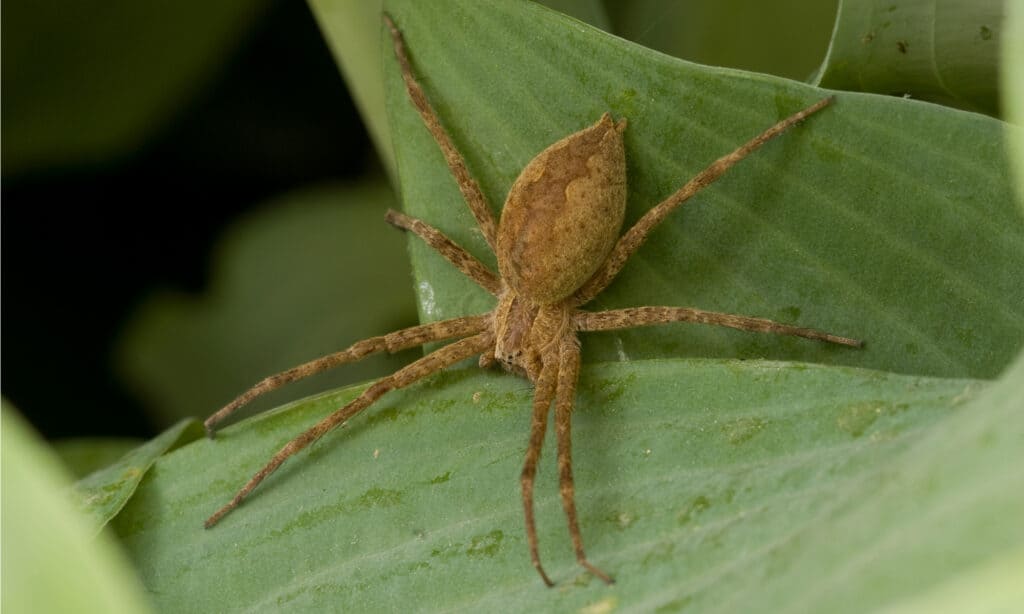The state of Louisiana is famous for its wildlife and jazz music, along with being the final stop on the Mississippi River’s course throughout the United States. While the alligators are certainly the most interesting reptiles in this state, they’re not the only cool creatures lurking around. Today, we will examine five of the biggest spiders in Louisiana.
This state is home to quite a few sizeable arachnids, and we’re going to show you an array of different species in this state!
What Are the Biggest Spiders in Louisiana?
When we measure the biggest spiders in Louisiana, we consider the entire creature and its leg span. When you see a spider that can stretch out to the size of your entire hand, you won’t worry about just its body length.
With that in mind, we will examine these spiders in terms of their size, danger to humans, and looks. By the time we’re done, you’ll know what is waiting for you in the dark recesses of your home!
5. Southern House Spider

Kala Stuwe/Shutterstock.com
The southern house spider is a sizeable spider that is large and brown with long legs and a desire to live in the smallest crevices of your home that they can find. It is found in basements and attics, along with cracks in garages and other outbuildings. It loves overhanging areas where it can set up webs and benefit from structural protection.
Southern house spiders look somewhat similar to brown recluse spiders. They have a brown body with a marking on their carapace that looks to be a smaller version of the characteristic violin marking of the recluse.
As a result, most people eliminate this spider quickly. However, their bite is not very dangerous. The bite causes some minor pain that can sometimes last for days.
4. Swamp Wolf Spider

Marshal Hedin / Creative Commons – License
The Tigrosa georgicola is a common wolf spider in the southeastern United States. Sometimes, people call this the swamp wolf spider, but that name is used for other species as well. Although they’re some of the biggest spiders in Louisiana, they are not the largest wolf spiders around.
Swamp wolf spiders tend to have dark bodies, ranging from a charcoal color to a dark brown. They are known for having a light brown stripe that runs down the length of their carapace along with dark marks on their abdomen and legs that are banded with light and dark brown colors.
A bite from a swamp wolf spider is mildly painful because they aren’t as large as others. Also, the bite area is likely to swell. Some people are allergic to wolf spider venom, and they can experience extra complications that require medical attention. Still, this is a rare event.
3. White-Banded Fishing Spider

iStock.com/Brett_Hondow
The Dolomedes genus has a lot of very large spiders in its ranks, and the white-banded fishing spider is a reasonably large one. This spider is easily spotted by the white carapace, dark abdomen, and long leg that is banded with a light color, often white and dark brown.
You’ll usually see these fishing spiders near and on the water. They can run across water and even dive below the surface to capture their prey. Usually, they hunt different types of small fish, semi-aquatic insects, and even tadpoles.
Although they are fierce hunters, they pose no threat to humans. If you pick one up and it feels threatened, it may inflict a mildly painful bite. These spiders rarely go near humans due to their nocturnal nature and skittishness, though.
2. American Nursery Web Spider

SDeming/Shutterstock.com
The American nursery web spider is a reddish brown or brown spider that has a dark brown stripe running down its body with an even darker pattern in the middle of the stripe on its abdomen. This stripe may be bordered by a light-colored stripe. This spider has legs banded with a light and darker brown or reddish brown.
Like other nursery web spiders, including Dolomedes spiders, this one builds a web nursery for its young before they hatch. The mother also stands guard for these spiders while they’re hatchlings. Don’t worry about them starving, though.
These spiders are known for getting a few good meals in before they turn into sentinels for their babies. After all, they are sexually cannibalistic spiders, so they eat their mates. In the rare event that they do bite a person, they’ll mostly feel pain and have some swelling. Just watch out when you’re near their habitat, which includes shrubs, bushes, and tall grass where they like to live.
1. Texas Brown Tarantula

texas brown tarantula/Shutterstock.com
The Aphonopelma hentzi is a very common tarantula in the southern states, and it’s certainly one of the biggest spiders in Louisiana, if not the largest outright. It’s claimed to be the Texas, Oklahoma, and Missouri brown tarantula, so you may have heard three different names for a single creature.
These tarantulas have a large, bulbous, hairy, and dark brown abdomen, a light brown carapace, and dark brown legs with hairs jutting off of them. They are large, heavy spiders that measure about 2 inches in body length, but they are not aggressive towards humans.
You’ll often find them living under cover of rocks, fallen trees, and tall vegetation. If you handle one, it may deliver a painful bite with its large fangs. You’ll experience swelling and possible infections in the puncture wounds. Some people are allergic to their venom and need medical attention, though.
The biggest spiders in Louisiana aren’t dangerous to people, even if they look that way. However, some species of spiders in this state can cause harm to people. The two spiders that you must avoid in this state are the black widow and the brown recluse.
You should also watch out for the yellow sac spider as well. If you keep your distance from these spiders or carefully exterminate them, you should not have to worry about many other arachnids causing you harm.
Up Next:
The post 5 of the Biggest Spiders in Louisiana appeared first on AZ Animals.
from Animal News, Facts, Rankings, and More! - AZ Animals https://ift.tt/7rOxmFb